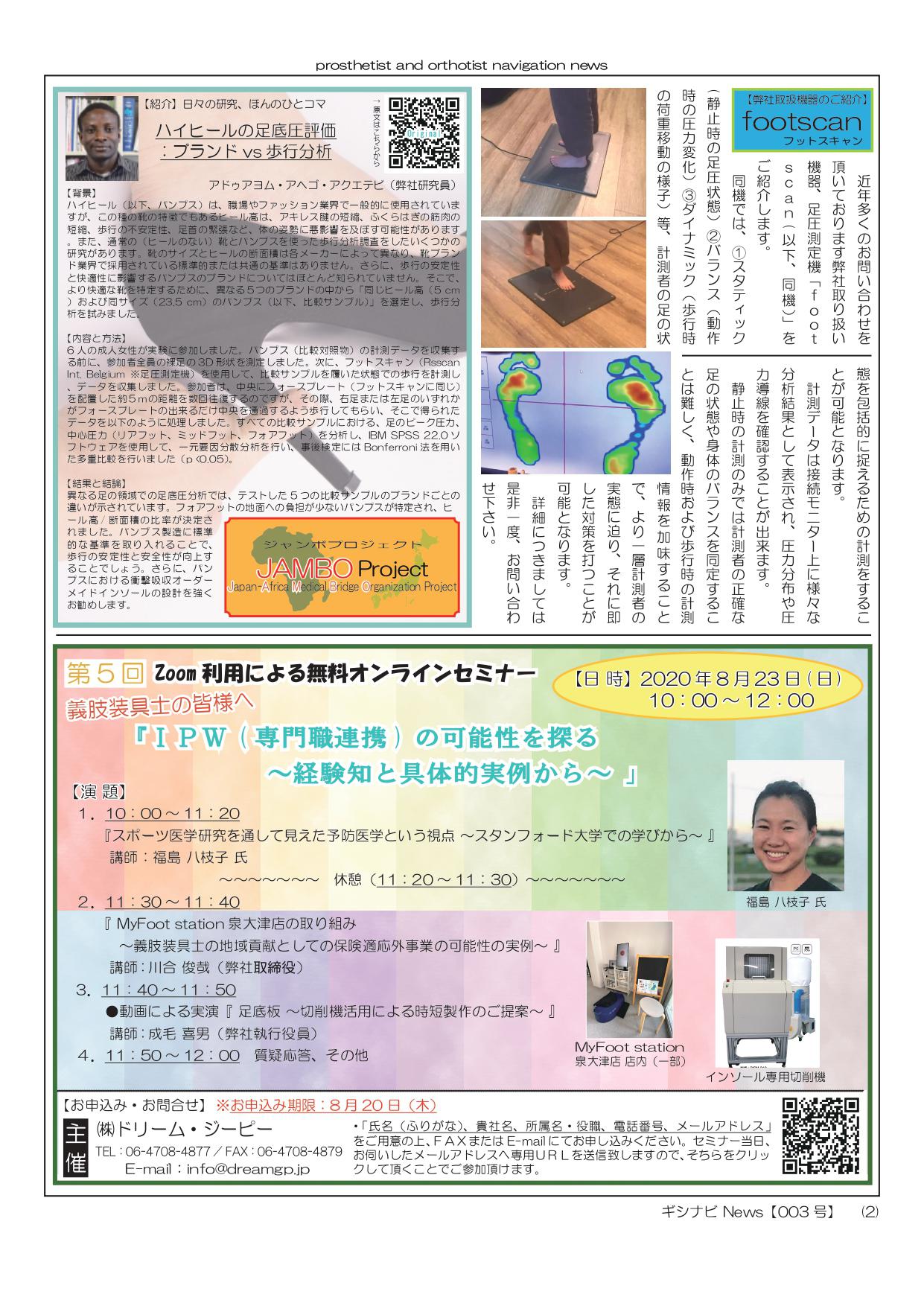ギシナビNews【第3号】
2020/08/05


Plantar pressure evaluation of high heeled shoes: brands vs gait analysis
【Background】 High heel shoes are commonly used in work place and in fashion industries. These high might have negative effects on the body posture such as: shortening of Achilles tendon, calf muscles shortening, gait instability and ankle strain. Several studies have investigated on gait analysis with normal shoe and high heels shoes. Shoe size and heel section area differ from makers and there are no standard or common criteria adopted by the shoes brands industries. Moreover, little is known about pumps shoe brand effects on gait stability and comfortability. In order to identify a more comfortable shoe between different brands, five same size (23.5 cm) high heeled shoes with the same heel height (5 cm) were used for gait analysis.
【Materials and Methods】 Six adult females participated in the experiment. Before collecting the high heeled shoes data, we measured the 3D morphology of each participant foot. Then gait data were collected using footscan (Rsscan Int. Belgium) in barefoot and with five brands high heeled shoes with 5 cm heel height each. Subjects walked in approximately 5 m walkway by putting either right or left foot on the force plate during walking. The data obtained were processed. The peak pressure, center of pressure, (Rearfoot, Midfoot and Forefoot) of the foot were analyzed in each high heel shoe condition. One-way analysis of variance and Bonferroni post-hoc analysis was performed (p<0.05) using IBM SPSS 22.0 software.
【Result and Conclusion】 The plantar pressure analysis in different foot regions has shown differences between the five tested high heeled brands shoes. The high heeled shoe that exerted less forefoot pressure on the ground has been identified and the heel height / section area ratio has been determined. Adopting a standard criterion in manufacturing high heeled shoes will increase gait stability and safety. Furthermore, the designing of shock absorption custom insoles in the high heeled shoes will be highly recommended.
2022/01/11
ギシナビNews【第20号】2021/12/28
ギシナビNews【第19号】2021/11/19
ギシナビNews【第18号】2021/10/05
ギシナビ News【第17号】2021/09/06
ギシナビNews【第16号】2021/08/05
ギシナビNews【第15号】2021/07/06
ギシナビNews【第14号】2021/06/14
ギシナビNews【第13号】2021/05/07
ギシナビNews【第12号】2021/04/06
ギシナビNews【第11号】2021/03/05
ギシナビNews【第10号】2021/02/05
ギシナビNews【第9号】2021/01/05
ギシナビNews【第8号】2020/12/08
ギシナビNews【第7号】2020/11/05
ギシナビNews【第6号】2020/10/05
ギシナビNews【第5号】2020/09/07
ギシナビNews【第4号】2020/08/05
ギシナビNews【第3号】2020/07/06
ギシナビNews【第2号】2020/06/10
ギシナビNews【創刊号】
